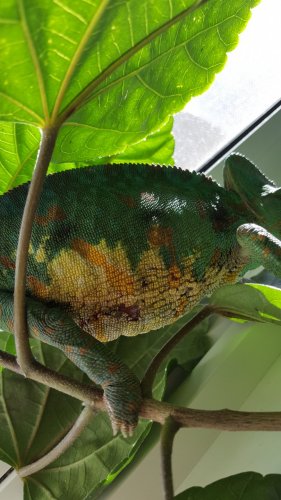Rookie1911
New Member
Ok so this might be lengthy we purchased our Gloria a year ago from a boxed store to save her from the conditions she was being kept in, the day after we bought her I took her to the vet because I was concerned about her breathing and she was diagnosed with a respiratory infection and was put on antibiotics she was 8grams. Fast forward to today she is 120grams and has been very good and healthy until a week ago.
So in Dec I knew she was carrying eggs I chose to do an ultrasound on her to check on the eggs for complications as I know with her previous history and potentially weakened immune system she might have had complications, however the vet assured us everything looked good all eggs were uniform size the vet did not see any reason for complications. Her cage was fully prepared lay bin and all the vet looked over all information I provided, temps, lights, I even had a sample of the dirt and she said everything looked great.
For 2 weeks Goria dug and dug she worked so hard but at the end I only ever found 3 eggs, (i only looked for eggs after I decided to bring her back to the vet). After the 2 weeks and she seemed restless we went back to the vet and had another ultrasound which showed all the eggs were gone but 4 which the vet said were surrounded by fatty tissue and would most likely be re absorbed by her body? Within a week of that vet visit she started with this skin discoloration???


So in Dec I knew she was carrying eggs I chose to do an ultrasound on her to check on the eggs for complications as I know with her previous history and potentially weakened immune system she might have had complications, however the vet assured us everything looked good all eggs were uniform size the vet did not see any reason for complications. Her cage was fully prepared lay bin and all the vet looked over all information I provided, temps, lights, I even had a sample of the dirt and she said everything looked great.
For 2 weeks Goria dug and dug she worked so hard but at the end I only ever found 3 eggs, (i only looked for eggs after I decided to bring her back to the vet). After the 2 weeks and she seemed restless we went back to the vet and had another ultrasound which showed all the eggs were gone but 4 which the vet said were surrounded by fatty tissue and would most likely be re absorbed by her body? Within a week of that vet visit she started with this skin discoloration???






